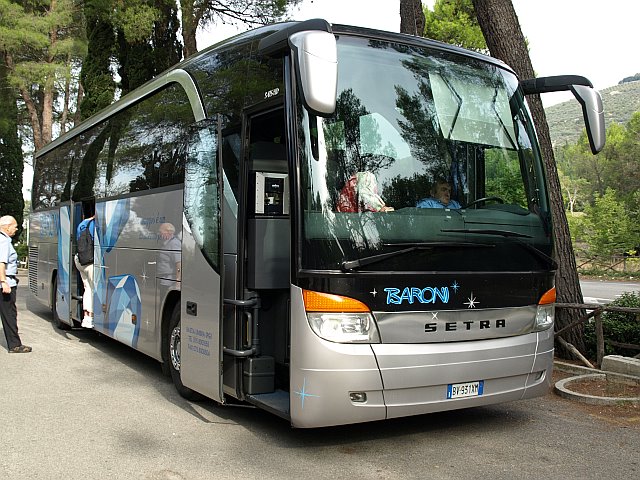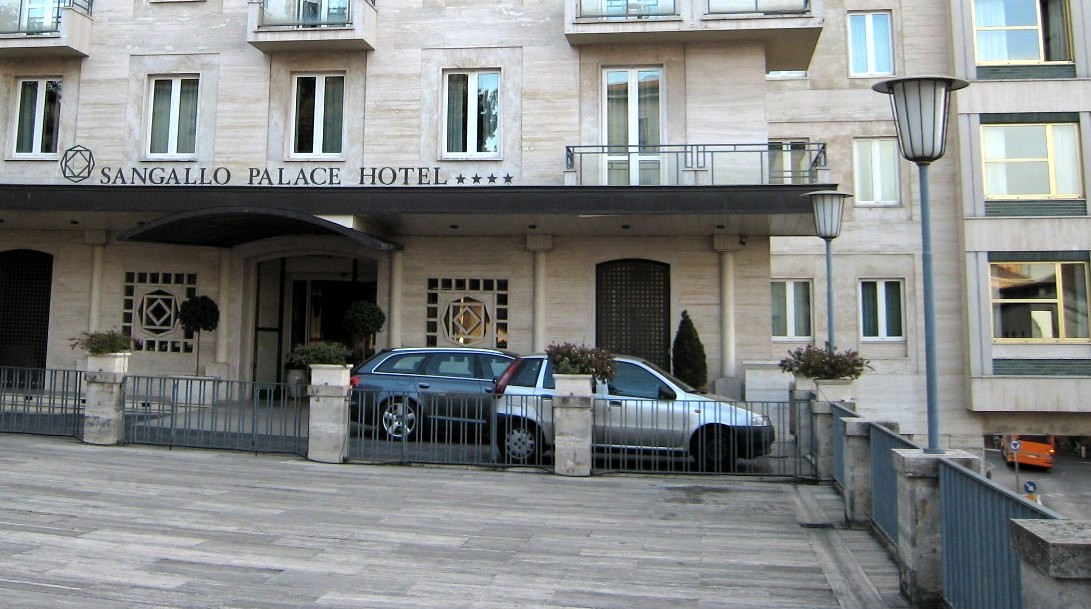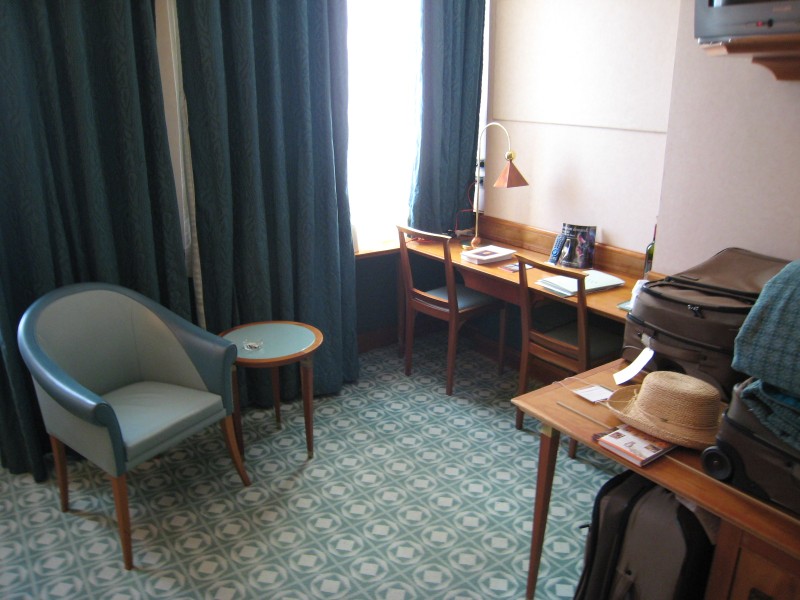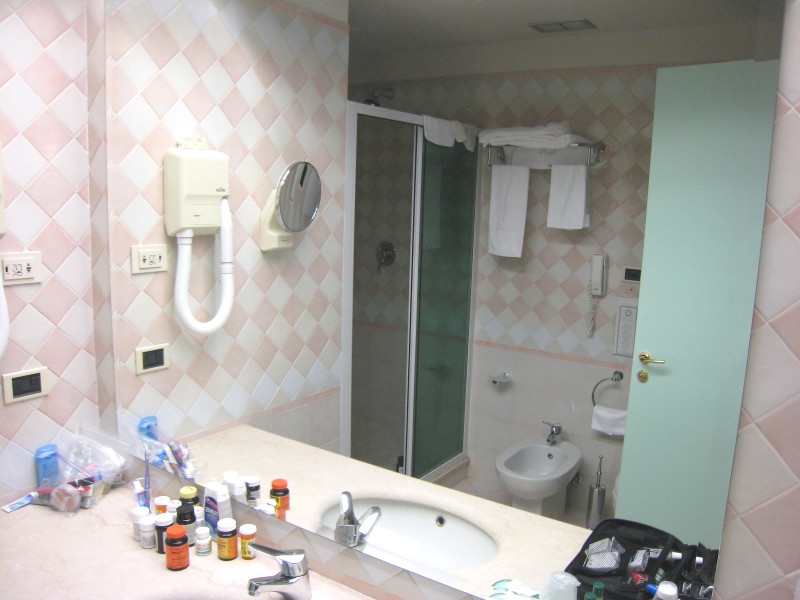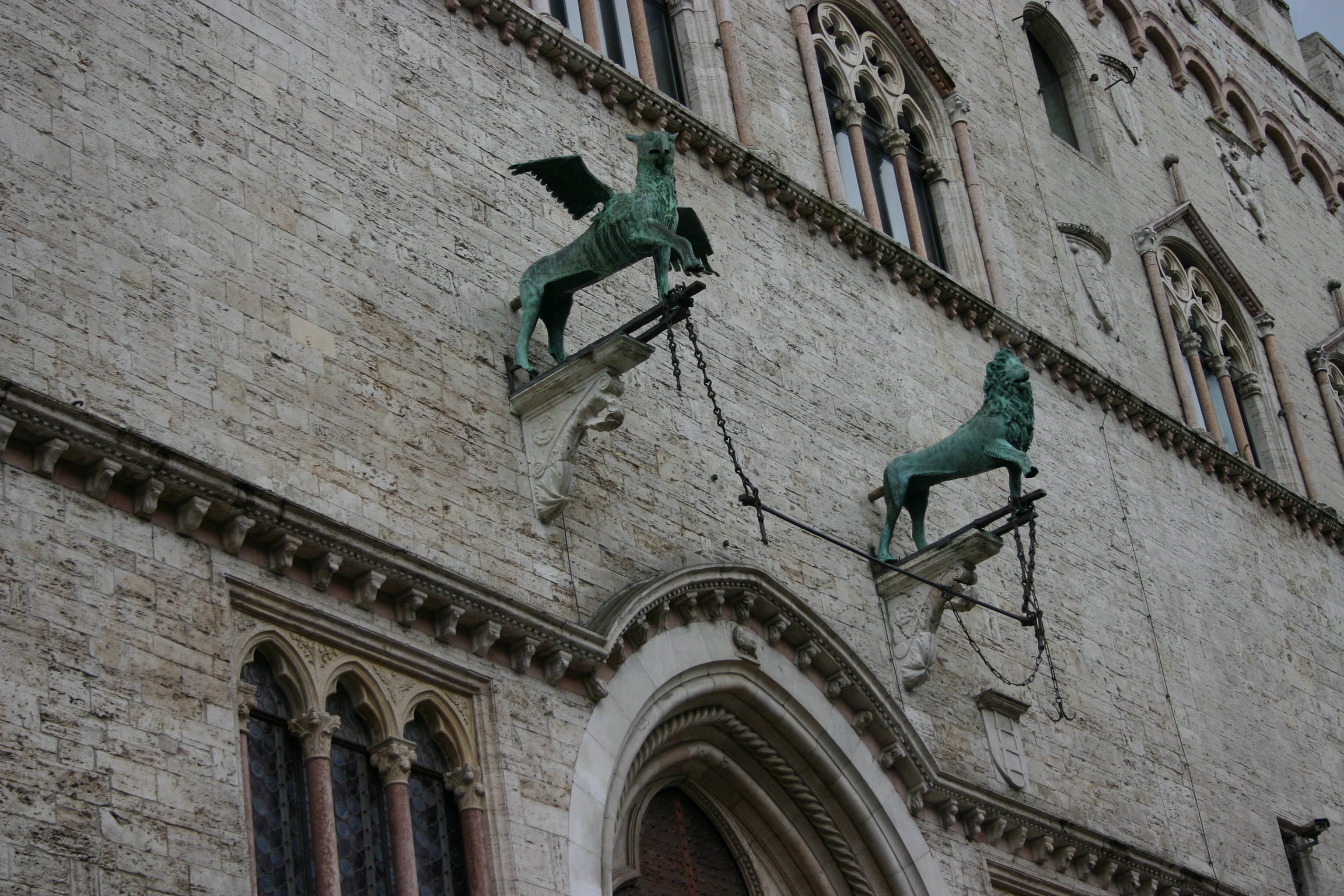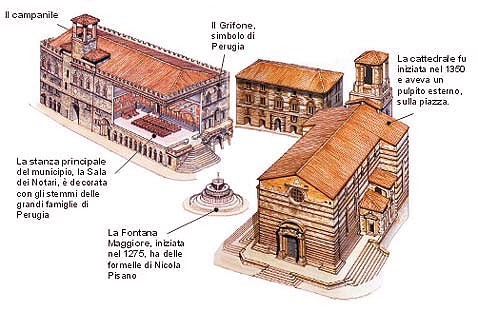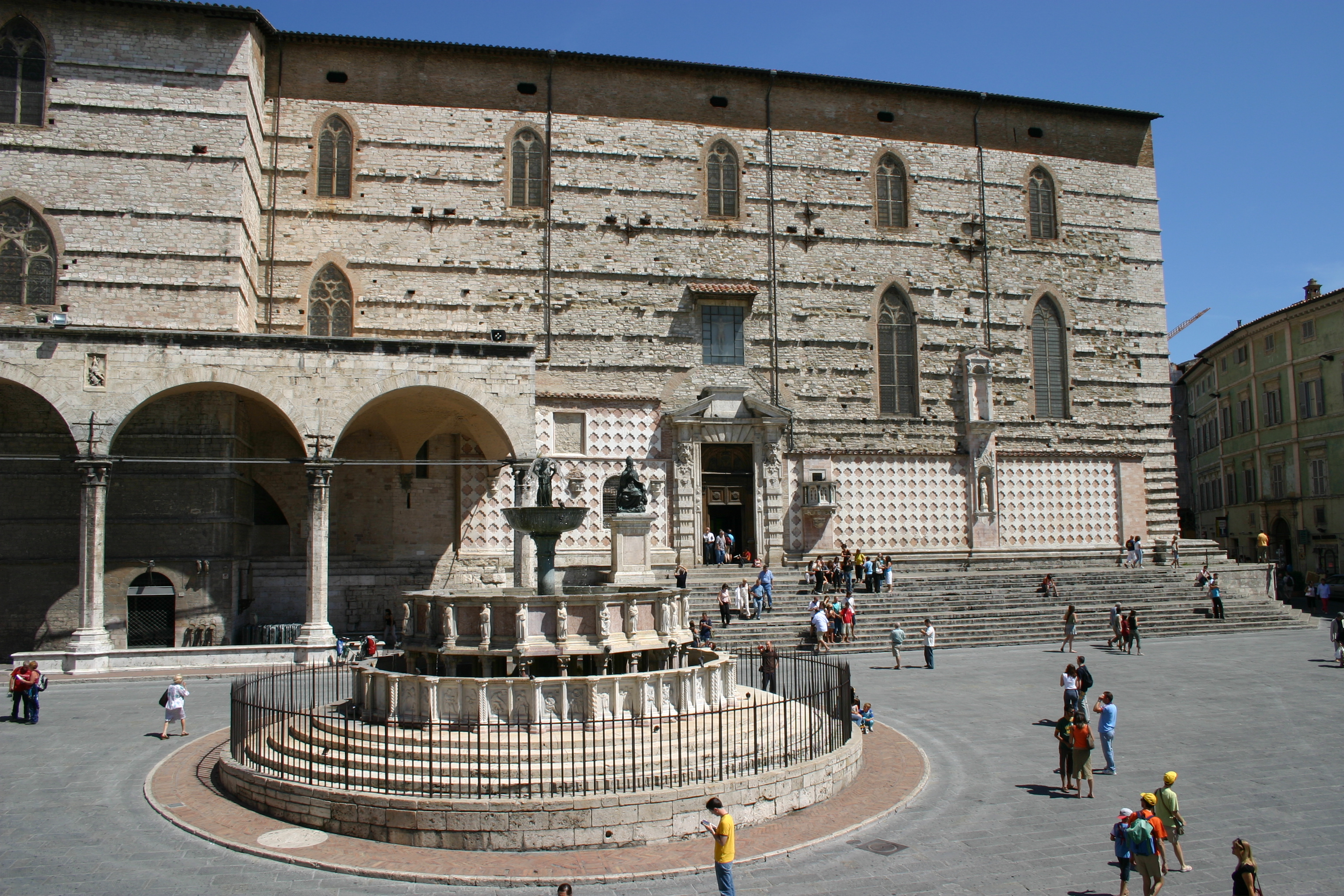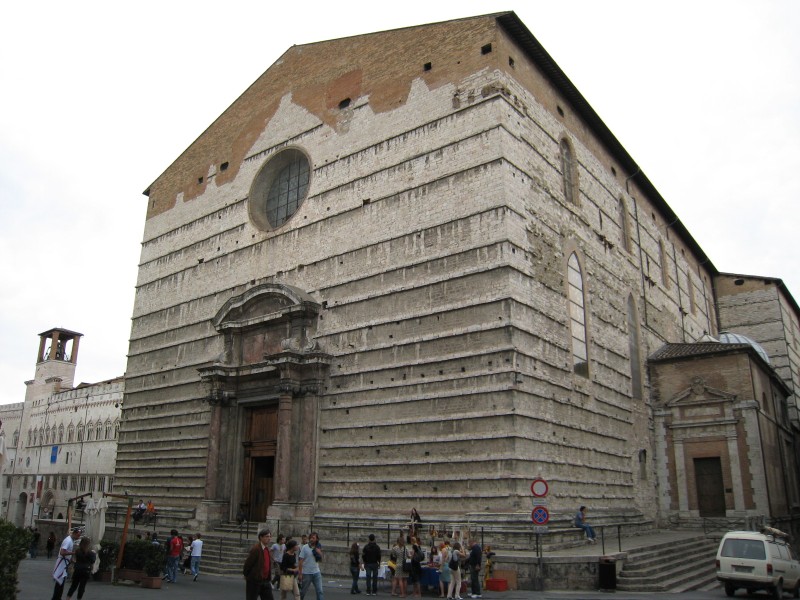We said goodbye to Assisi this morning after breakfast and a walk to the Comune. I had planned to feed the pigeons in the Piazza Santa Chiara before we left, but they were already full from the food that people going to church had given them and were busy drinking water, taking baths and sunning themselves. I piccioni lead a great life in Italy (and anywhere around me).
Our hotel in Perugia is the Sangallo Palace. It's named for Antonio da Sangallo the Younger, a Florentine architect and builder who worked for several Popes. Our rooms are big and comfortable, very modern and very nicely decorated. In the corridors and rooms are reproduced works by Pietro Perugino and Pinturicchio, particularly those seen at the local Collegio del Cambio and the National Gallery.
| Perugia |
|  Perugia |
 contour map |
 Restaurants |
| Views of the Sangallo Palace from the hotel's website | ||||||||
 exterior |
 entrance |
 lobby |
 terrace |
 double bedroom |
 bathroom |
 conference room |
 dining room |
 buffet |
Sangallo Palace Hotel - ★ ★ ★ ★
We had an orientation talk after a brief time in our rooms, then lunch which was excellent. The room, while lacking the cosiness of our room in Assisi, is modern and airy. The dining room carries out the Perugino theme with characters from his "Allegories of Fortitude and Temperance" (Collegio del Cambio) on the pillars. The picture over our bed is a detail (upper right corner) of Perugino's Moses journey into Egypt from the Sistine Chapel. We had time after that to unpack and get acquainted with whatever quirks there are. There's internet service here, but I successfully resisted the temptation. Somehow the pace of life in Umbria doesn't seem compatible with email and instant messaging. The beds are comfortable, as is the room. The shower is ... well, Italian. It's very high up on the wall, has very little pressure, and temperature wavers unexpectedly. You can see our room: the pair of windows just to right of those cars in front. You just walk out of the lobby and, boom, you're there. It could only happen in Italy: our first floor room is # 720 (Italians label our "2nd floor" the "1st floor" (primo piano); all I can guess is that their computer couldn't handle # 020 so they just changed the "0" to "7" for rooms on the ground floor).
Orientation Walk along Corso Vanucci
From our hotel to the escaltors through Rocca Paolina to the Piazza Italia
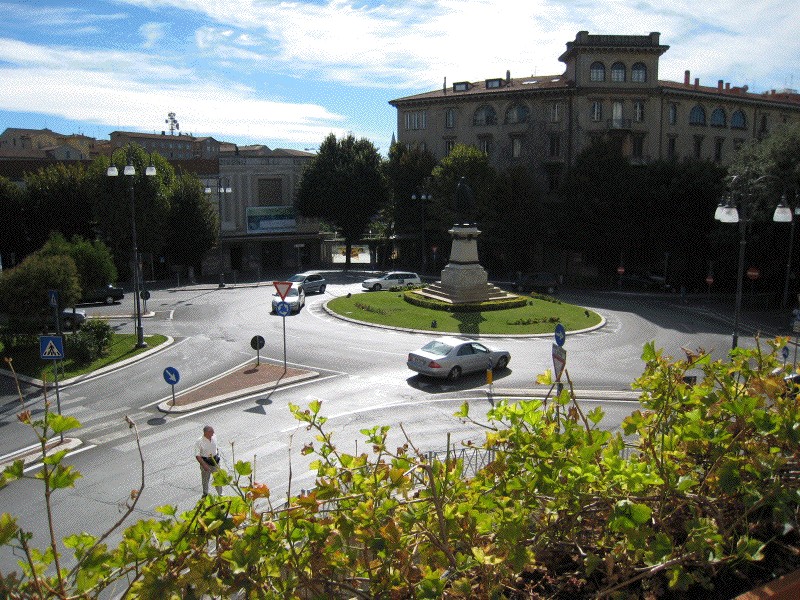
Piazza Partigiani
|
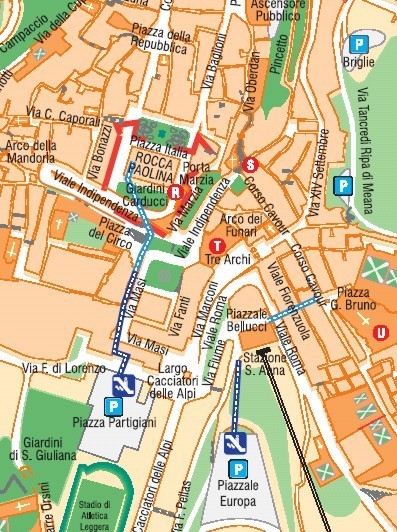
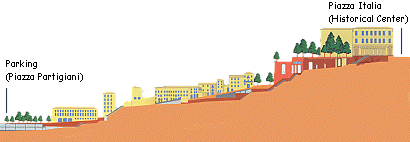 |


Piazza Italia
|
|---|---|---|
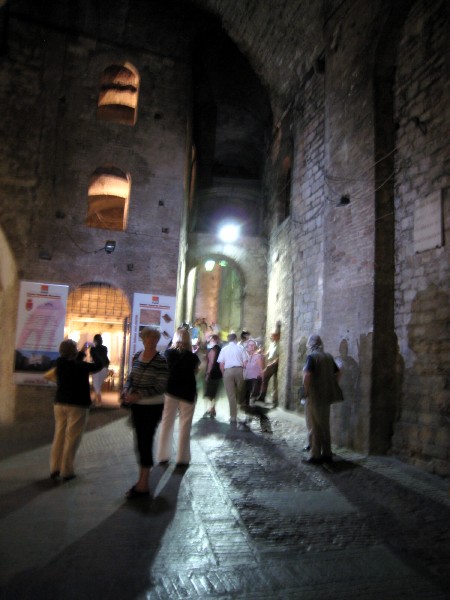

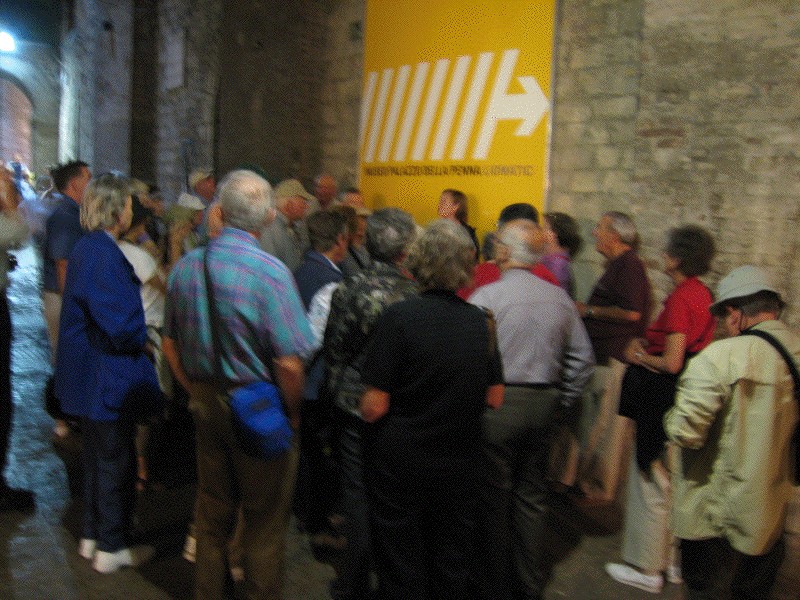

|
Genna led us on our introductory walk through Perugia's historic center, starting with a short walk to the escalators which lead up to the town center. In 1370 Cardinal Aegidius Albornoz reconquered the territories of Tuscia and Umbria on behalf of Pope Innocent VI, exiled in Avignon. As proof of the renewed dominion, in 1373 Albrornoz ordered a fortress to be built on the highest point of town. Three years later the Perugians completely destroyed it. In 1540, after reconquest, Pope Paul III commissioned Antonio da Sangallo the Younger to build a new fortress. The Pope hated the Baglioni family, so every one of their palaces was torn stone from stone except a few walls which the architect wished to incorporate into the new building. In this catastrophe fine works of art, and many historic monuments were lost. The destruction included 26 towers, 11 churches (one of which was the magnificent church of Santa Maria dei Servi), 2 monasteries, and 300 houses. This time the citizens of Perugia had to wait until the Roman Republic of 1848 for a first, partial demolition of the loathed symbol of papal power and finally until 1860 with the unification of Italy for its final destruction. In 1980 a modern system of elevators was installed, preserving much of the palace and even exposing some Etruscan ruins.
The first two pictures to the right of the map show, respectively, "il Corso" looking north toward the Fontana Maggiore, and south toward Piazza Italia (see the map). The building with the tower and the arched entry is the Palazzo dei Priori (essentially, City Hall) with the Sala dei Notari (Lawyers Hall) on the corner. The interior of theSala dei Notari heavily frescoed. Unlike most cathedrals, San Lorenzo, the cathedral of Perugia, has its flank rather than its façade on the city's main square. The external decoration in white and pink marble lozenges was never completed; only a trial section can still be seen. The sculpture on the wall is of Pope Julius III, a hero to Perugia for restoring the local magistrature which had been suppressed by the tyrannical Pope Paul III. In the unfinished wall is a pulpit from which Saint Bernardino of Siena preached in 1425-7. Students from the local university use the wide steps for resting in the sun and watching the activity in the piazza.
We had a break until our guide was due. While we waited, Karen and I went to the Cafe de Perugia and had divine hot chocolate, a local specialty. After that we sat on some steps with Martha and Bill Beverly until time for the tour to begin. Our guide is Claudia Sanvico, a Perugian. She showed us the Palazzo dei Priori, Perugia's center of government, with a brief look at the Sala dei Notari (Hall of Lawyers), which is decorated in frescoes that were hard to see because it was so dark inside. That was also a problem inside the Duomo, which was practically stygian. The outside is not all that inviting, either. The façade was never finished. When we were there, the steps were crowded with young people - students at the University. One of their dogs put up a great howl when the church bells rang at five-thirty.
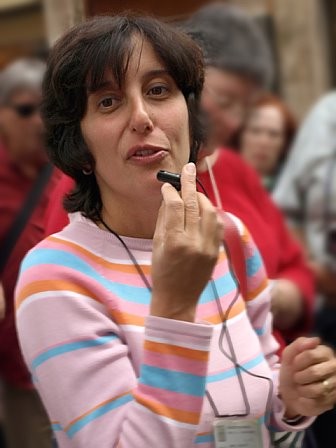
We found the tour experience frustrating because we had great difficulty hearing Claudia at times. When she was audible, she was excellent. I believe (and told her) that she'd do better without the mike-speaker she used. The thing was highly directional, so when the group formed around her, every time she turned away you lost the sound. The other solution would be to have the group form in front of, rather than around, her.

|
I was very tired and we opted out of going down a long, steep flight of stairs to see the Etruscan arch. Will try to do that on our own, using a less demanding route. We ran into Marco as we began to head back to the hotel and chatted with about how disappointing modern youth can be -- an ancient topic, of course (cf. Socrates). Then we continued toward the escalators. Stopped and had cappuccinos and watched people. Hordes of them.
Took naps before dinner. Another very good meal - good vegetable soup, roast pork (arista de suina al forno - approx. Italian) and mixed salad with radicchio. We haven't seen this much radicchio. It must be an Umbrian staple. Either that or it was an overzealous attempt to satisfy perceived American tastes. Had a glass of wine in our room before bed.

